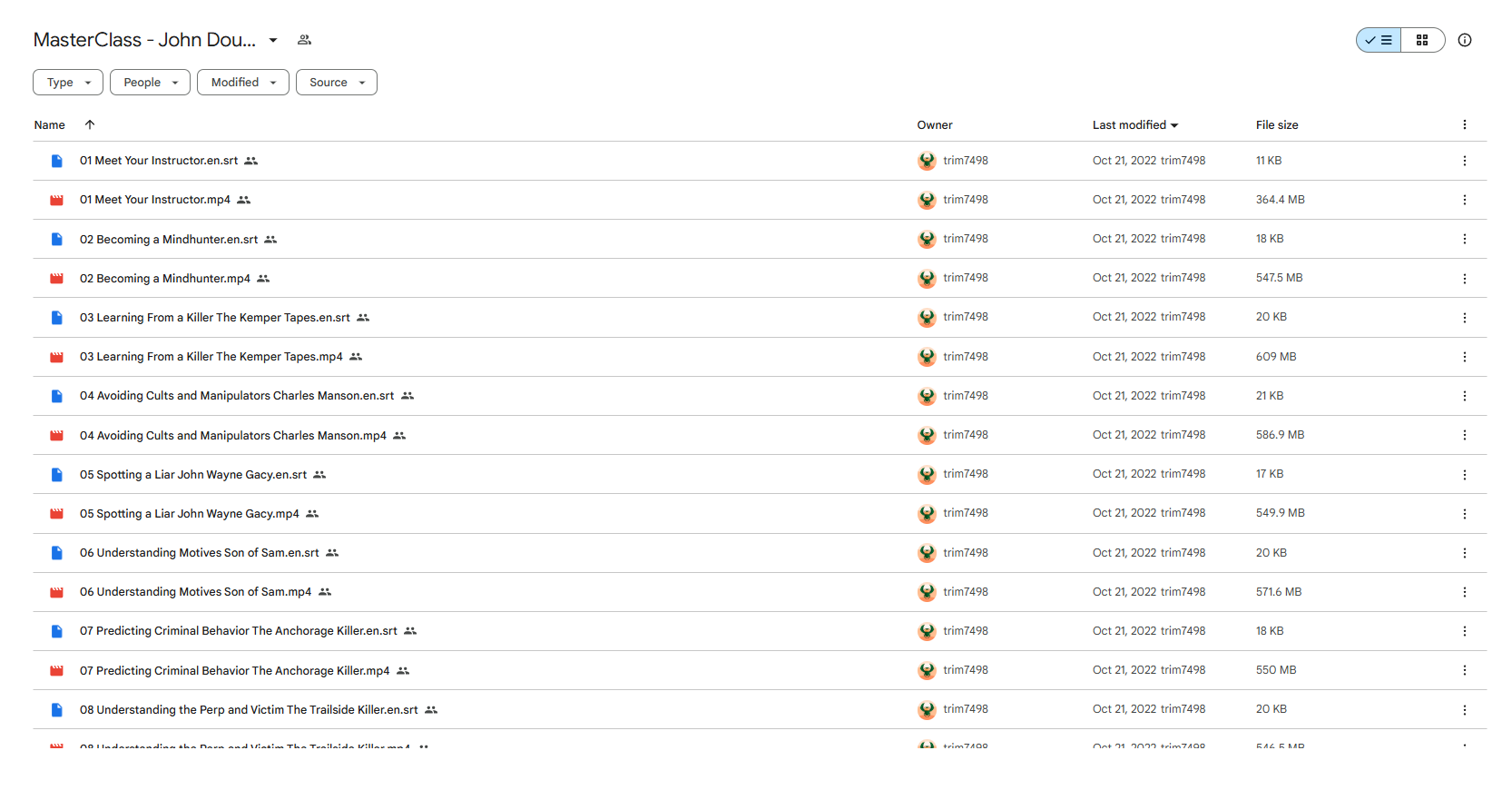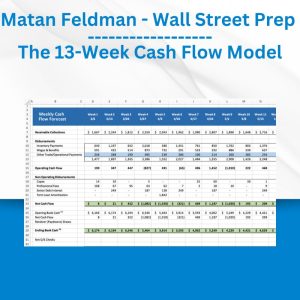*** Proof of Product ***

Exploring the Essential Features of “John Douglas – MasterClass – Teaches How to Think Like an FBI Profiler”
SEE WHAT OTHERS MISS
Key Takeaways
- Discover how criminal profiling methods can help predict people’s motives—and benefit everyday life
- Learn how John Douglas applied his field-revolutionizing tactics across 10 notorious criminal interviews
Netflix’s “Mindhunter” was inspired by the FBI’s first criminal profiler, John Douglas. As chief of the National Center for the Analysis of Violent Crime, he conducted groundbreaking interviews with notorious criminals such as Charles Manson and Ed Kemper, changing interrogative tactics forever. On MasterClass, he teaches you to use his methods in everyday life, unlocking your intuition to read people’s motives.
1. Meet Your Instructor
Former FBI Special Agent John Douglas introduces himself and his journey in becoming the first criminal profiler. He discusses how he became interested in the idea that behavior is predictable, which led to the FBI’s first criminal profiling program. You’ll get a glimpse into how these methods are valuable in everyday life.
2. Becoming a Mindhunter
In this lesson, we learn how John’s career took a turn to interviewing serial killers. We hear the backstory to the Ed Kemper case, when he decided to break FBI protocol to interview Kemper in prison. John shows you what it was like when 6’9″ Kemper first entered the interview room.
3. Learning From a Killer: The Kemper Tapes
John shares never-before-heard clips with Ed Kemper, known as the “Coed Killer,” who murdered college students, along with his mother. John’s interviews with Kemper set him on a path to understanding that all criminal minds exemplify three personality traits: manipulation, domination, and control. John challenges you to identify these traits in people you know to avoid being manipulated.
4. Avoiding Cults and Manipulators: Charles Manson
Charles Manson led a cult in the 1960s that ended with the infamous Tate–LaBianca murders. After detailing the crimes, John explains how we may know similar people in our own lives—not necessarily cult leaders, but people who share the same characteristics of a sociopathic personality.
5. Spotting a Liar: John Wayne Gacy
John Wayne Gacy was a notorious liar—as well as a serial killer who raped, tortured, and murdered at least 33 young men and boys. In this lesson, John deep dives into Gacy’s compulsive mendacity, and lays out ways to read someone’s behavior to determine if they’re being untruthful.
6. Understanding Motives: Son of Sam
David Berkowitz, a.k.a. the Son of Sam, terrorized New York in the late 1970s. When John interviewed him, he drilled down on the “why,” asking questions—a lot of them. He shares how catching serial killers comes down to a simple equation: why + how = who. With this as the foundation for asking the right questions, John provides guidance for understanding the motives of people in our own lives.
7. Predicting Criminal Behavior: The Anchorage Killer
In the case of Robert Hansen, we learn that he hunted his victims for sport in the Alaskan wilderness. John uses his interviews with Hansen to present the building blocks of criminal profiling, which can be summed up in three words: behavior reflects personality.
8. Understanding the Perp and Victim: The Trailside Killer
David Carpenter, a.k.a. the Trailside Killer, was known for stalking and murdering victims on hiking trails near San Francisco. John shows us how he used empathy to analyze the offender and victims—a process that led to Carpenter’s capture. He discusses why empathy is an important tool in analyzing others.
9. Identifying Vulnerabilities: Darrell Gene Devier
John gives us an inside look at the case of convicted rapist and child murderer Darrell Gene Devier. He notes that we all have vulnerabilities—but if you can learn how to identify them in others, you can use them to predict behavior. By understanding Devier’s vulnerabilities, John was able to coax a confession out of him.
10. Developing Intuition
Ever feel the hairs on the back of your neck stand up? That’s your intuition, and you should listen to it. In this lesson, John provides examples of cases in which intuition potentially saved lives—and walks us through ways we can develop our own intuition.
11. Determining M.O. vs. Signature: The BTK Strangler
John discusses the BTK Strangler, a serial killer who sent taunting letters to the police and media. In this lesson, John explains the differences between MO and signature so we can determine whether others are interfering in our lives.
12. Making Calculated Decisions: The Atlanta Child Murders
In this lesson, John explores the importance of taking calculated risks through analysis of convicted murderer Wayne Williams. He’ll challenge you to take calculated risks—even if that means making the same mistake twice. Fear of making decisions can stand in the way of doing groundbreaking work.
13. Lifesaving Lessons: Larry Gene Bell
Some cases cut to John’s core—such as the abduction of Shari Faye Smith by Larry Gene Bell. As horrifying as this case was, it provided John an opportunity to develop concrete, lifesaving lessons for everyday life.
14. Doing Your Own Profile
In this final lesson, John discusses the importance of profiling ourselves. By understanding who we are, we can better understand others. In addition, John shares how his demanding schedule affected his health, and the importance of work-life balance.
Please see the full list of alternative group-buy courses available here: https://lunacourse.com/shop/










 Racing Workshop - Complete Online Package
Racing Workshop - Complete Online Package